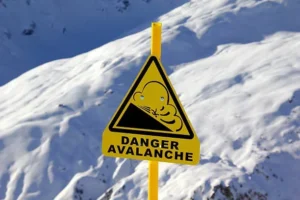Alaska is one of the prime destinations for polar bear enthusiasts, offering a unique opportunity to witness these majestic creatures in their natural habitat. However, best timing is crucial to maximize your chances of spotting them in the state. In this article, we’ll explore the best time to spot them, the optimal months for sightings, and peak viewing seasons.

Alaska Polar Bear Viewing Seasons | Best Time

This state has three main best viewing seasons:
| Season | Location |
| Fall season | This is the peak season to see, with the highest concentration of bears in the Arctic National Wildlife Refuge and the Northern Alaska Peninsula. |
| Winter season | During this season, they can be seen on the western and northern coasts, including the Bering Sea and the Chukchi Sea. |
| Spring season | In the spring, they can be spotted in the Arctic National Wildlife Refuge and the Northern Alaska Peninsula as they migrate to the sea ice. |
Optimal Months for Polar Bear Sightings in Alaska
September, October, and November are the optimal months and best time to spot them, which are marked under the fall season.
Best Polar Bear Watching Time in Alaska
The peak viewing depends on the location and the best time of day.

Early morning:
It is the best time for spotting them in the Arctic National Wildlife Refuge and the Northern Alaska Peninsula.
Late afternoon:
The best time for spotting them in the western and northern coasts, including the Bering Sea and the Chukchi Sea.
Alaska Polar Bear Tour Seasons
As we have learned before the fall season is the best to see them including September, October, and November. Therefore if you are a seasoned traveler and you are planning a short trip and you also want to see them then you should be visiting in October because during the fall season, they congregate in areas with access to sea ice, such as river mouths, coastlines, and ice floes. This concentration of bears increases the chances of sightings.

Seasonal Polar Bear Habitats Alaska
Polar bears can be found in various habitats throughout the year:

Sea ice:
They spend most of their time on sea ice, where they hunt for seals and other prey.
Tundra:
During the summer months, they can be found on the tundra, where they feed on berries, lichens, and other vegetation.
Coastal areas:
They can also be found in coastal areas, including beaches and rocky shores, where they feed on marine mammals and other prey.
Best Time And Months to See And Capture Polar Bears in Alaska

September:
Best month for capturing them in their natural habitat, with the fall colors providing a stunning backdrop.
October:
Best month for capturing them in action, as they hunt for seals and other prey on the sea ice.
Polar Bear Migration Alaska
Polar bears migrate seasonally between their summer and winter habitats:

Spring migration (March to May):
They migrate from their wintering grounds on the sea ice to the tundra and coastal areas, where they feed on other prey.
Summer migration (June to August):
Polar bears migrate to the tundra and coastal areas, where they feed on berries, lichens, and other vegetation.
Fall migration (September to November):
They migrate back to the sea ice, where they feed on seals and other prey.
Winter migration (December to February):
They migrate to their wintering grounds on the sea ice, where they feed on seals and other prey.
Few Best Locations in Alaska to Spot Polar Bears

- Katmai National Park and Preserve: High concentration of polar bears, especially in coastal areas like Cape Seniavin and Hallo Bay.
- Arctic National Wildlife Refuge: Large population in the coastal areas of the Arctic Coast and Beaufort Sea.
- Northern Alaska Peninsula: They can be spotted in the coastal areas around Nome and Kotzebue.
- Barrow: They can be seen in the coastal areas of the Arctic Ocean and Chukchi Sea. The Chukchi Sea population is more stable, with estimates ranging between 4,000 and 7,000 bears.
- Kaktovik (Barter Island): A small Inupiat village is known for polar bear sightings in the Beaufort Sea and Arctic Ocean.












